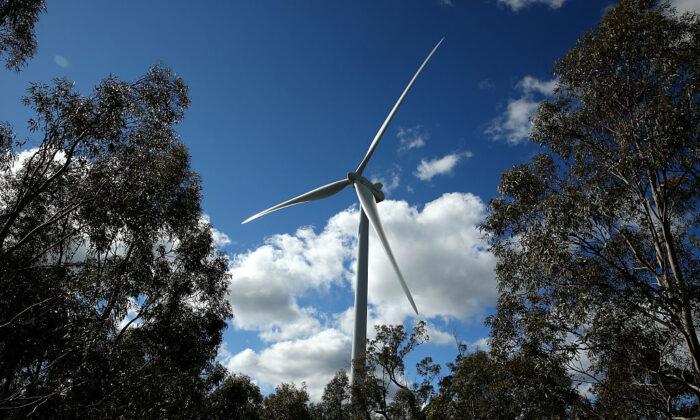A net-zero Australia will require up to $9 trillion (US$6 trillion) of capital to be spent on energy, industrial and export infrastructure by 2060, researchers say.
Decarbonisation is tipped to provide 700,000 direct jobs, mainly in regional and rural areas, according to independent modelling released on Wednesday.
New export industries would be mainly in northern Australia, close to export markets, with significant production in the south but access to land and water could be controversial.
Replacing coal generators - and tripling power capacity by 2030 - requires a more rapid rollout of wind and solar farms, transmission infrastructure and energy storage, and a greater uptake of electric cars and heat pumps, the research by Net Zero Australia found.
Utility networks would be greatly expanded with powerlines carrying renewable energy and new pipelines for desalinated water and hydrogen.
Renewables, mostly wind and solar, are the main energy source of the future, with offshore wind expected to make a significant contribution from around 2030.
Batteries also have a big role across the various scenarios in shifting daytime solar generation to cover evening peak demand.
But Australia must not shy away from using gas as a backup for renewable energy or opening up new gas fields, Net Zero Australia said.
Net Zero Australia is a business-sponsored research partnership of the University of Melbourne, the University of Queensland, Princeton University’s Andlinger Center for Energy and Environment, and consultancy Nous Group.
To reach the national renewable energy generation target of 82 per cent by 2030, the clean energy industry says the pace of new large-scale projects needs to at least double.
But direct use and clean fuel production on the scale projected by Net Zero Australia would require 40 times the existing national electricity market capacity.
The Australian Petroleum Production and Exploration Association said the report highlights the urgent need for federal government leadership on carbon capture and clear policy direction to promote the country as a regional carbon storage leader.
APPEA chief executive Samantha McCulloch said even with unprecedented renewable energy, gas power generation capacity will need to double by 2050 to power industry and generate low-carbon hydrogen.
Melbourne Energy Institute director Michael Brear said an increase in renewables and electrification, supported by a major expansion of transmission lines and storage, are key to net-zero success.
“But we will need an all-technology, hands-on-deck approach,” Professor Brear said.
“That includes a large increase in permanent carbon storage, deep underground and in vegetation, and a doubling of gas-fired power capacity to support renewables and energy storage.”
Hydrogen made using solar, wind and desalinated water could replace fossil fuel exports, according to the report.
University of Queensland chemical engineer Simon Smart said Australia has a global responsibility and economic incentive to move from coal and gas exports to clean commodities.
Making and exporting green metals using renewables-powered hydrogen could be more viable than exporting hydrogen, he added.
Northern Australia - WA, Queensland, and the NT - would be well suited to new exports, but inland NSW and SA and offshore Victoria and Tasmania could also play major roles.
The modelling found no role for nuclear energy unless costs were to fall sharply.





